Fault-Tree-Analysis
Introduction and terms
Fault-Tree-Analysis (FTA) is a type of systems analysis of technical systems. It is based on Boolean algebra to determine the probability of failure of a system or an entire system. Depending on the application, FTA is standardized in various areas, e.g., as the international standard IEC 61025 (EN 61025).
Visual-XSel 20 Analyser allows you to create fault trees quickly and easily.
Principle structure of the FTA
The Fault-Tree-Analysis is structured vertically. At the top is the so-called Top-Event, the result of the Basis Events at the lowest level, the actual triggering causes.
Aim and benefits of the FTA
The goal is to determine possible combinations of causes that lead to certain undesirable events, the Top-Event. The FTA is therefore also a risk analysis.
FTA is primarily a preventative method, but is also used as an analysis tool in the event of a failure. Other characteristics of FTA include:
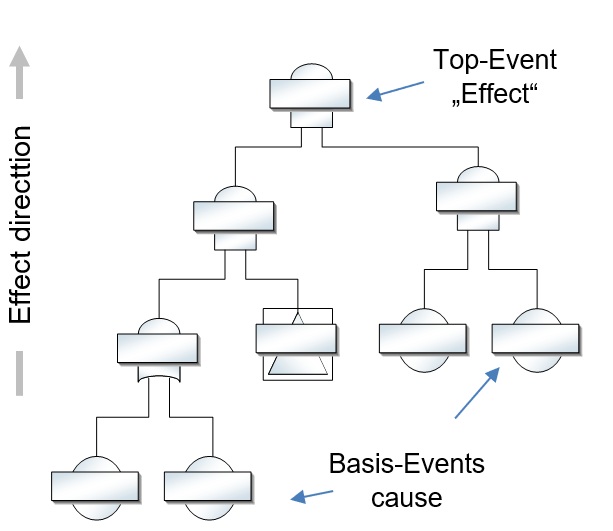
- Hierarchical tree structure to represent the relationships (qualitative analysis).
- Consideration of both the technical components and the operating and environmental conditions.
- Calculation of the probability of the undesired event (quantitative analysis).
- Identification of possible failure causes and their combinations.
- Comparison of variants.
The elements of the FTA
e events are linked by various logical operators, known as gates. These events include device errors, operator errors, and software errors, which can lead to undesirable consequences with a certain probability. The following overview on the right shows the most important elements of the FTA:
Although FTA is primarily used for electronic or control systems, especially in the security sector, it can be applied universally.
Example Spoiler
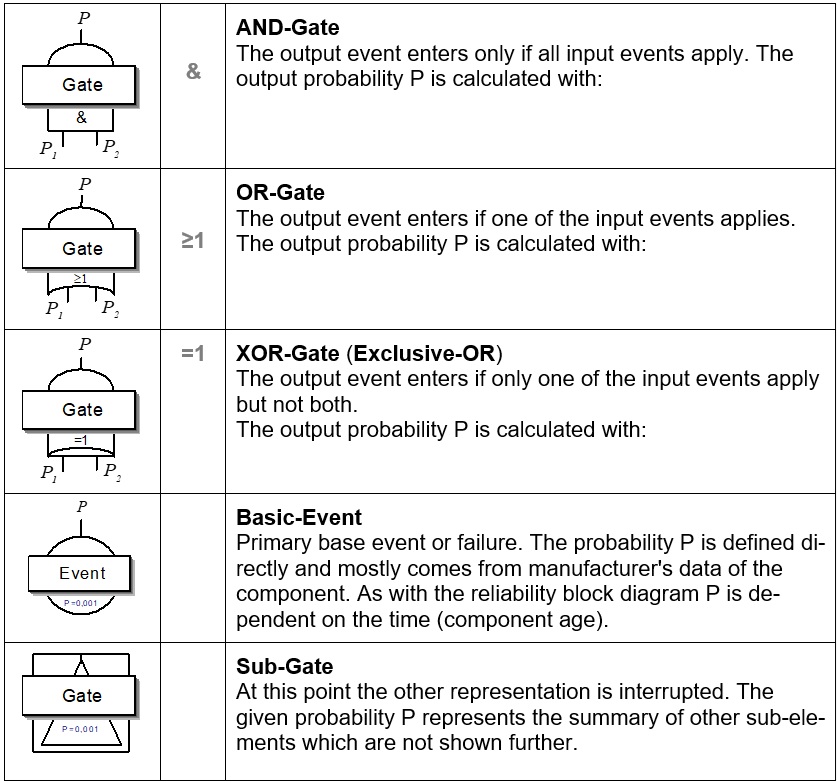
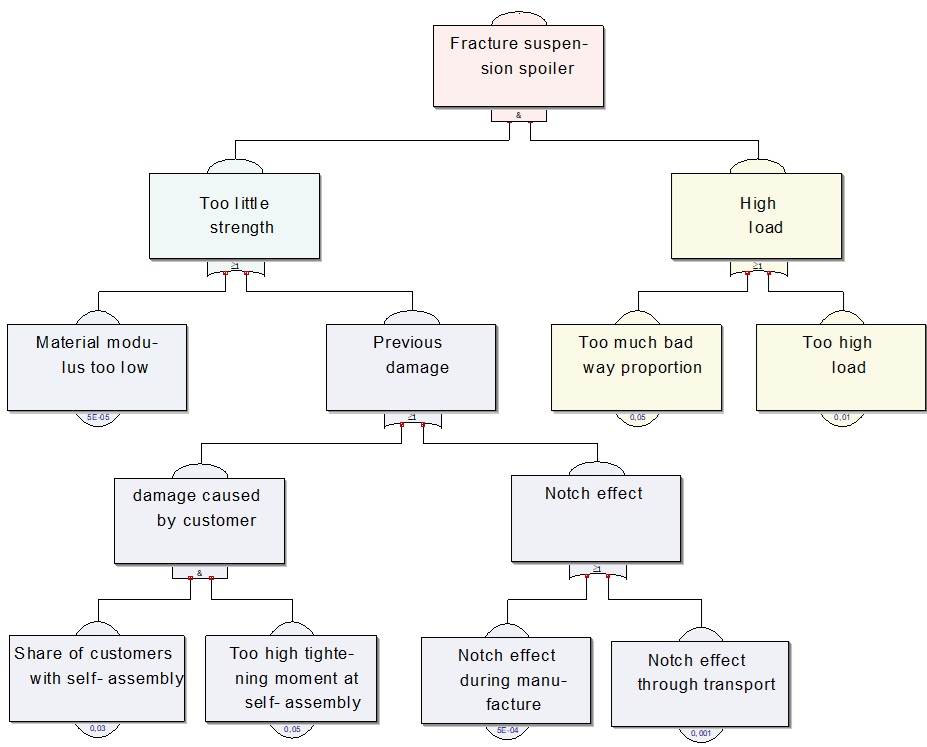
Fault-Tree-Analysis with Visual-XSel
All important FTA functions are available in Visual-XSel 20 Analyser. It is accessed via the Analysis icon:

A basic framework with three levels is provided. Editing of content and probabilities is done via pop-up menus via the right mouse button.
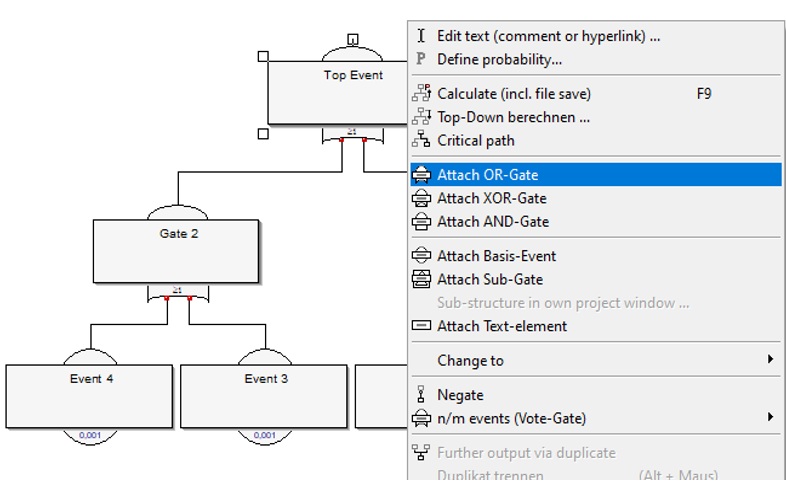
At the lowest level of Basis Events, the probabilities of occurrence can be defined.
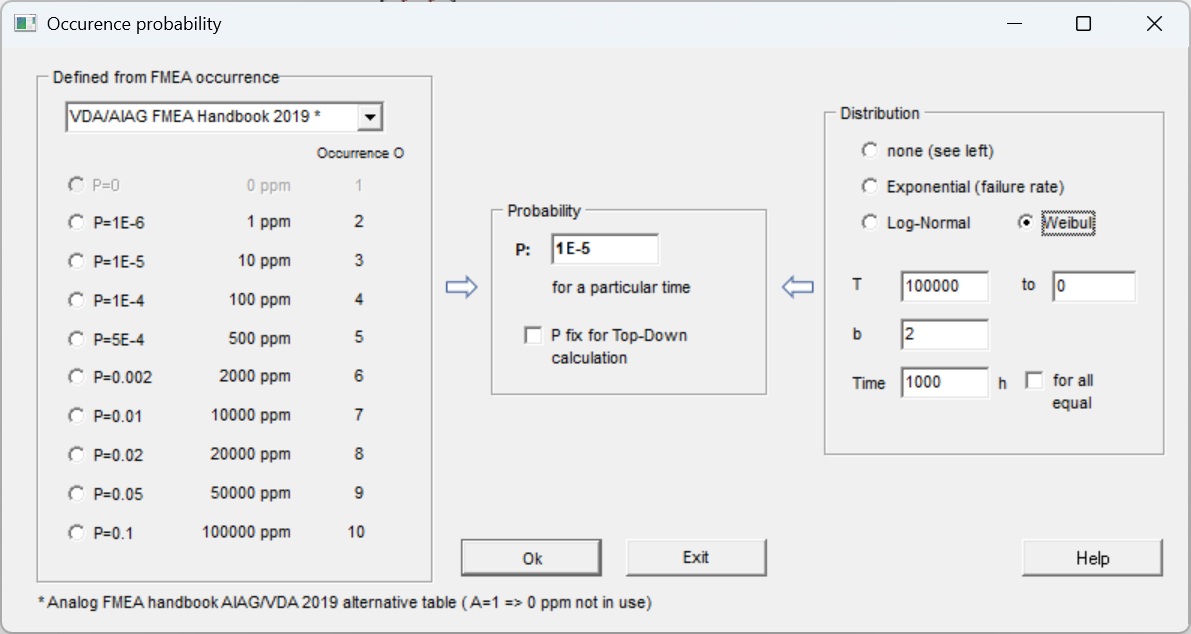
In addition to directly entering probabilities in the middle, there is the option of describing them over time using statistical functions (right). However, information about these relationships is often unavailable. As an alternative, the probability of occurrence can be used analogous to FMEA (left). The basis is optionally the VDA/AIAG FMEA manual, a joint standard with the Americans.
Many FMEA tools offer the option of deriving an FTA. In this case, the FMEA would be the starting point, as it is a required procedure in many cases, e.g., via IATF 16949. By deriving the so-called structure tree in the form of an outline, parts of the FMEA can be transferred directly into a fault tree in Visual XSel.
Where occurring failures are not listed in the FMEA, or where a system is being newly developed, it is recommended to first create an FTA and then transfer the results to the FMEA. Visual-XSel offers an export function for this:
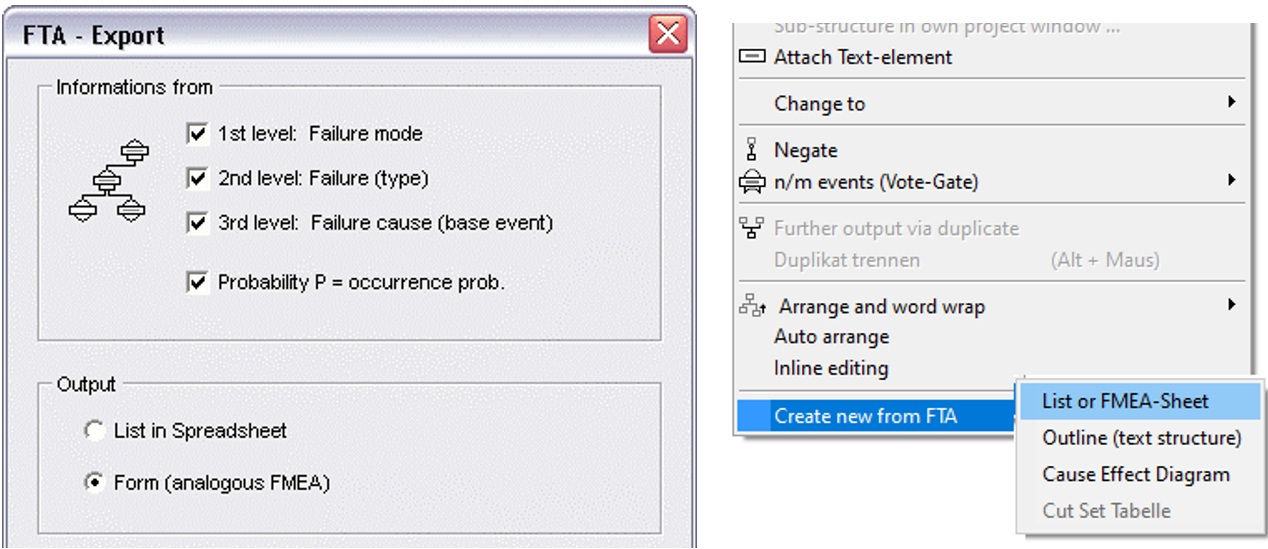
Further detailed information can be found at:
www.weibull.de/COM/Fault_Tree_Analysis.pdf

